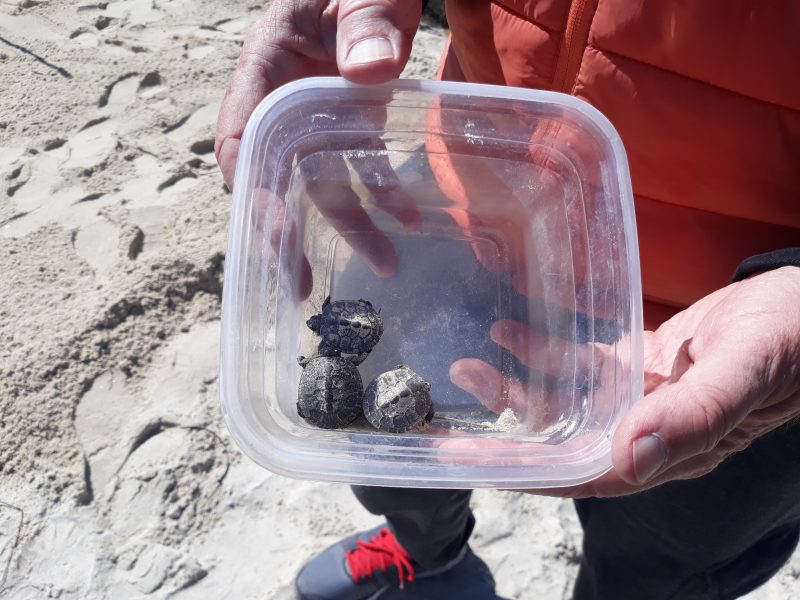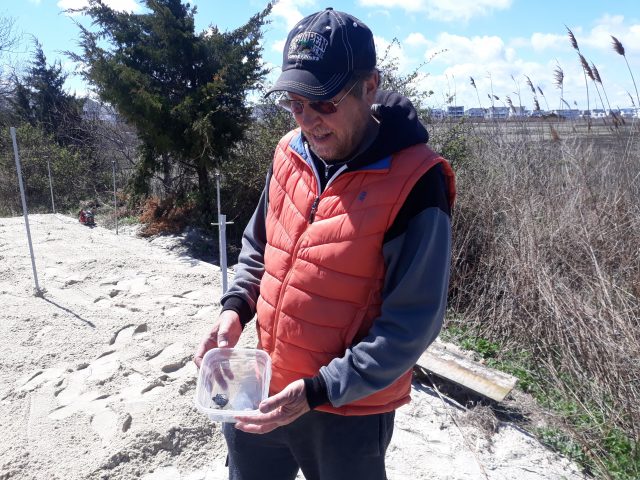
By DONALD WITTKOWSKI
They were tiny, each one roughly the size of a quarter.
The three baby diamondback terrapins were discovered hibernating Saturday in a sandy turtle nesting box designed to protect them from predators.
It was astonishing that something so small and fragile survived the hostile winter weather.
“It’s a little bonus. They were fast asleep and not going anywhere. It was nice that nothing found them,” Steve Ahern, co-founder of the Sea Isle Terrapin Rescue organization, said of the discovery of baby turtles not eaten by predators.
Each spring, Ahern and other volunteers dig up and refurbish two turtle nesting boxes overlooking the marshlands behind the Sea Isle City library to get them ready for the diamondback terrapins that lay their eggs in the summer.
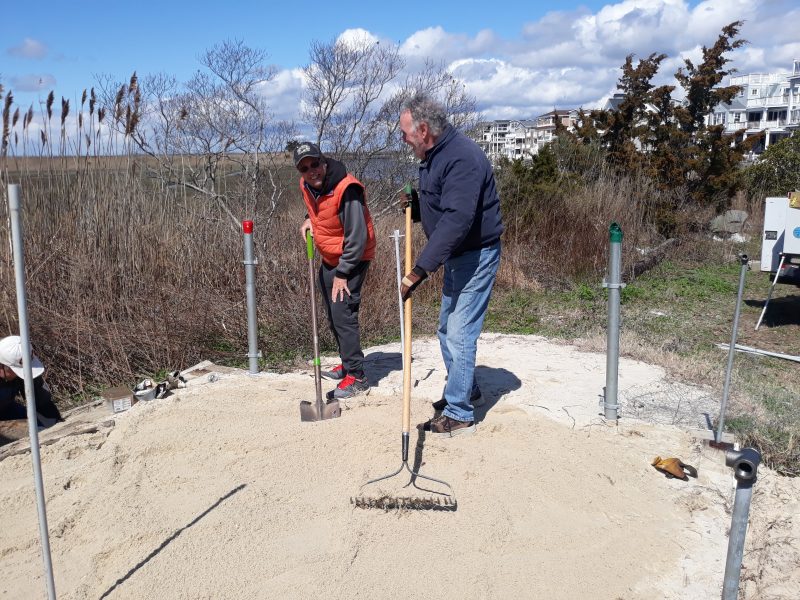
Female turtles emerge from their coastal marshlands habitat from May to July in search of a patch of sandy soil to make their nests. Covered by netting, the nesting boxes give the diamondbacks a safe place to lay their eggs, denying predators such as foxes and raccoons an opportunity to raid the clutches.
“If it wasn’t for us, these little turtles wouldn’t have a chance,” Sea Isle Environmental Commission member Dudley McGinty said.
McGinty used a rake to smooth out the sand in one of the nesting boxes. Built five years ago, the box had become rusty and rotted in spots while exposed to the salt air and was being reconstructed by a group of volunteers led by Ahern.
“This is a major reconstruction,” Ahern explained.
Nesting boxes give turtles an alternative place to lay their eggs. They are not in harm’s way near roads and there is a gate and netting designed to keep out predators.
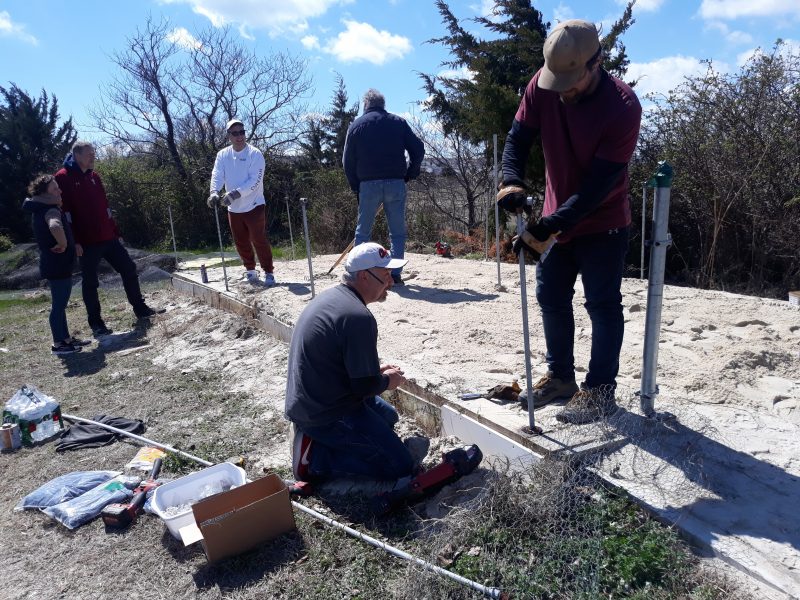
Diamondback terrapins can live for 30 to 40 years, but with roadwork, construction, shore traffic and deaths related to the fishing industry, longevity is always a concern.
The terrapins have not been classified as threatened or endangered in New Jersey, but they are listed as decreasing. Only one egg in a thousand grows up to be an adult turtle, Ahern has explained in previous interviews.
Over the years, Ahern and his wife, Susan, the other co-founder of Sea Isle Terrapin Rescue, have worked with officials from the city, Cape May County and the Wetlands Institute in Stone Harbor to help create safer conditions for the turtles.
Ahern noted, for instance, that Sea Isle’s Environmental Commission donated $700 to $800 for the materials to refurbish or reconstruct the two turtle nesting boxes. He and his wife are members of the Environmental Commission.
“We wouldn’t be able to do it without that support,” Ahern said while expressing his gratitude to the city.
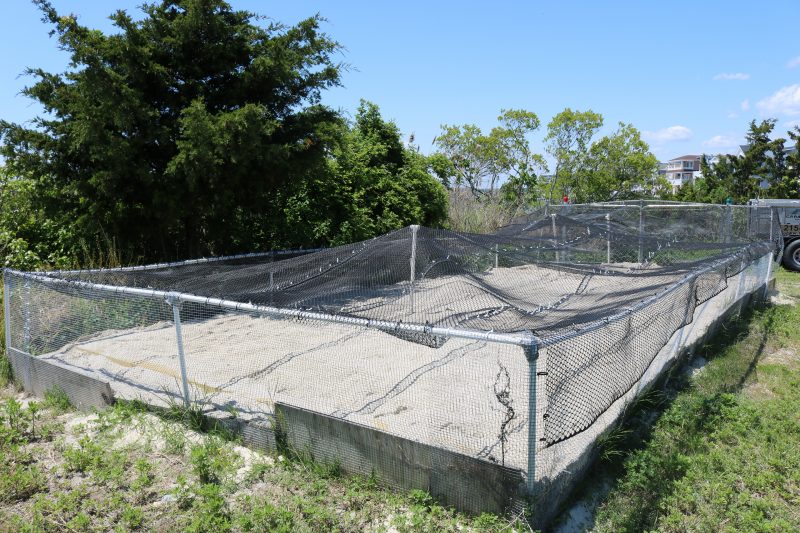
The nesting boxes are far larger and more elaborate than their name would suggest. They are more of an enclosure than a simple box. The first one, built in 2017, measures 12 feet-by-25 feet. The second one, constructed in 2018, is slightly smaller.
In the fall, volunteers carefully dig through the sand to uncover any turtle hatchings that didn’t leave the nesting boxes on their own to head into the marshlands.
Altogether, 350 live hatchlings were found in one box and 20 in the other last fall, Ahern said. With the assistance of local children, volunteers released the hatchlings in the wetlands behind the library at 48th Street and Central Avenue.
On Saturday, volunteers returned to the boxes to prepare them for the summer nesting season. Ahern noted that the discovery of three live hatchlings was a complete surprise. It was the first time hatchlings had been found in the spring, following what could have easily been a lethal winter for the baby turtles.
“We never found anything in the spring before,” Ahern said. “They were the first.”
Ahern placed the turtles in a plastic container and kept them in a truck to warm them up before they were released into the marshlands.
For them, it was finally time to leave the nest.
